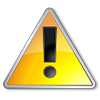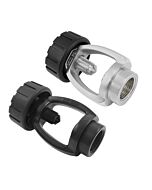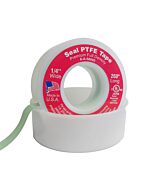Accurate Cylinder Pressure Checker
- Quickly check pressure of your cylinder
- Fits all SCUBA valves with a DIN outlet
- Provides readings in both Imperial and Metric
- Easy twist pressure release
- DIN threads and handwheel are METAL material for durability
Accurate Cylinder Pressure Checker
Our Accurate Cylinder Pressure Checker has much better accuracy than the typical diving analog SPG. In terms of a percentage error of ±2.5% in the full range scale.
Having to hunt for an SPG-equipped regulator when trying to determine whether a set of tanks is sufficiently full can be a hassle. That's why it helps to have a simple, easy-to-use check gauge handy. The Accurate Cylinder Pressure Checker comes standard with a DIN connector that fits any SCUBA valve with a DIN fitting. If you have to check a tank with a K-valve, just spin on a DIN-to-Yoke Adapter. The dial provides readings in both imperial and metric units of measurement. Nice features of the Dive Gear Express version are the bidirectional pressure bleed is a rotating collar on the stem, so there is no bleed screw to lose, and the gauge body itself includes a rubber boot to improve shock resistance.
Easy to use: (1) screw the DIN fitting into the valve (2) rotate the bleed on the stem until it stops tightly closed (3) open the cylinder valve very slowly while turning your face away from the gauge (4) once the valve is fully open look at the pressure indicated (5) close the valve and rotate the bleed until the pressure begins to drain (6) once the pressure is completely drained unscrew the DIN fitting only using the collar.
A bit of history on why we call this SCUBA cylinder pressure checker "accurate". There are several versions of this device in the diving marketplace that use an unreliable analog gauge. In the early days of our business we sold one of those too, but we bench tested every one before we shipped it. Even hand selecting the best, we still got complaints about their reliability in the field. So we sourced our own version with a better quality shock-resistant gauge that meets CE standards. Thus our Accurate Cylinder Pressure Checker was born, having withstood the test of time as we have sold it over our many years.
Like all such Bourdon tube pressure gauge designs, their accuracy can be affected by a g-shock level impacts. Please handle your gauge with care. If it is dropped, you should verify the reading against a known value in the middle of the range.
Because the DIN threads and handwheel on the Accurate Cylinder Pressure Checker are black color, it leads some people to assume the DIN assembly is made of plastic. However, we can assure you the DIN threads and handwheel are METAL. The DIN fitting with the handwheel is machined as a single piece from aircraft aluminum (the same stuff aluminum scuba tanks are made of) that has been anodized a dark black color.
| Brand | DGX |
|---|---|
| SKU | DX-701440 |
| Weight | 1.050000 |
Customer Reviews
 WARNING
WARNING
Whenever you pressurize a mechanical gauge, it's possible that the tiny Bourdon Tube inside the gauge housing will crack and instantly release tank pressure in to the body of the gauge. This is a rare occurrence in modern gauges but can happen with any such pressure measuring device. When a failure does occur parts of the gauge, especially the face cover, can become a dangerous projectile. Best practice is to always open tank valves very slowly and to position yourself out of the direct line of any pressure gauge. While opening the tank valve, turn your face and eyes away from the gauge and also do not hold the gauge housing itself in your hand or against your body.
Units of Pressure in Diving
Globally there are a great many derived units of measurement for pressure in wide use, although pressure is often expressed as a force per unit area. The unit of pressure most familiar to divers in the US is pounds per square inch (psi), while bar is widely used by divers in the European Union. Many divers accustomed to the metric system are surprised to learn that bar is an archaic unit of measurement for pressure that is deprecated, replaced by the Pascal.
There is no convenient order-of-magnitude equivalent to bar in Pascal (Pa), the closest being one bar is exactly 100 kiloPascal (kPa). Expressed as force per unit area, one bar is ≈1.02 kilograms per square centimeter (kg/cm2) in the metric system, which is pretty close. Many divers think about pressure in terms of height of a column of sea water: one bar is defined as exactly 10 meters of sea water (msw) or ≈32.6 feet of sea water (fsw). Some partial pressure diving calculations are more convenient when performed using a unit of pressure known as atmospheres (atm): one atm is ≈1.01 bar or ≈14.7 psi. Given the relative accuracy of the diving devices we are using for measurement these are close enough that we've seen many divers interchangeably use 1 bar, 1 atm, 1 kg/cm2, 15 psi, 10 msw and 33 fsw as all equivalent, although this may distress the scientists and engineers among us.






